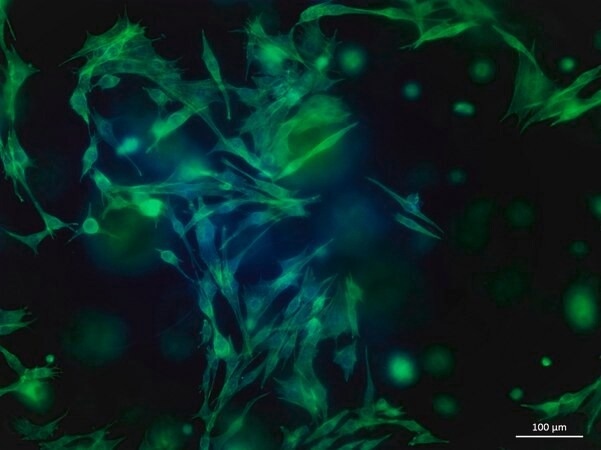Gelatin methacryloyl (GelMA) is a polymerizable hydrogel material sourced from natural extracellular matrix (ECM) components. Its widespread use in tissue engineering applications is attributed to its cost-effectiveness, abundant availability, and ability to preserve natural cell binding motifs.
Fibronectin, on the other hand, is a versatile glycoprotein with two primary isoforms: a soluble version found in plasma and an insoluble variant residing within the ECM of tissues, including cartilage. Fibronectin is renowned for its integrin binding sequences, which are pivotal in facilitating cell-matrix interactions.

Image Credit: Merck
Properties
Source: Merck
| . |
. |
| Form |
Viscous liquid (gel) |
| Size |
10 mL |
| Impurities |
<5 cfu/mL Bioburden
<50 EU/mL Endotoxin |
| Color |
Pale yellow to colorless |
| pH |
6.5-7.5 |
| Viscosity |
3-30 cP |
| Application(s) |
3D bioprinting |
Application
Incorporating photocrosslinkable methacrylamide functional groups into GelMA enables the creation of biocompatible, biodegradable, and non-immunogenic hydrogels that exhibit stability under biologically relevant conditions. These hydrogels also facilitate cell adhesion, spreading, and proliferation.
Gelatin methacrylate-based bioinks have been effectively employed in the 3D bioprinting of various tissues and structures, including osteogenic, chondrogenic, hepatic, adipogenic, vasculogenic, epithelial, endothelial, cardiac valve, skin, tumor, and other tissue constructs.
Fibronectin plays a crucial role in a range of biological functions, including angiogenesis, cell migration and differentiation, and wound healing. In the realm of tissue engineering, fibronectin has found application in wound healing, angiogenesis, bone repair, and the study of mechanotransduction.
Features and benefits
Besides quick gelation, the methacrylamide functional group also provides the ability to manage hydrogel physical attributes like pore size, degradation rate, and swell ratio. By altering the degree of functionalization and polymerization conditions, precise temporal and spatial control of the crosslinking reaction can be achieved, enabling the creation of hydrogels with distinctive patterns, 3D structures, and morphologies.